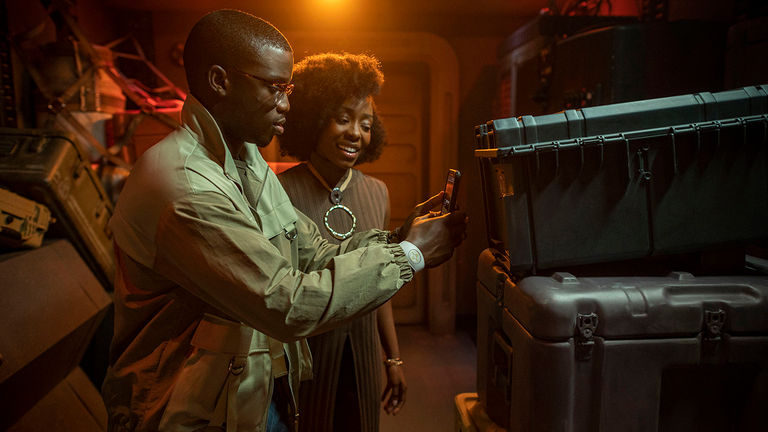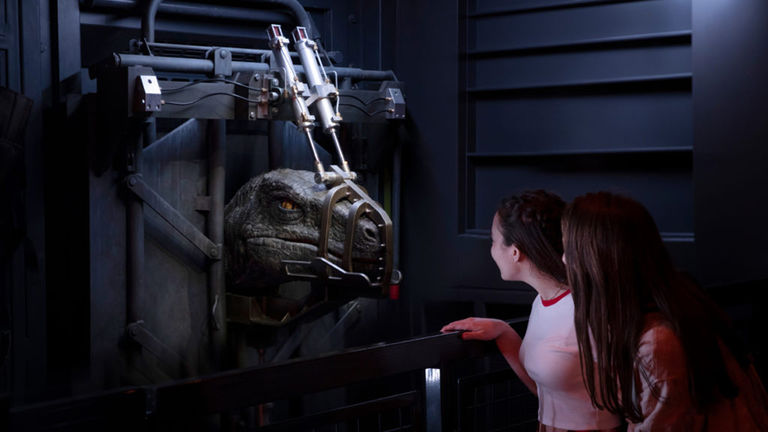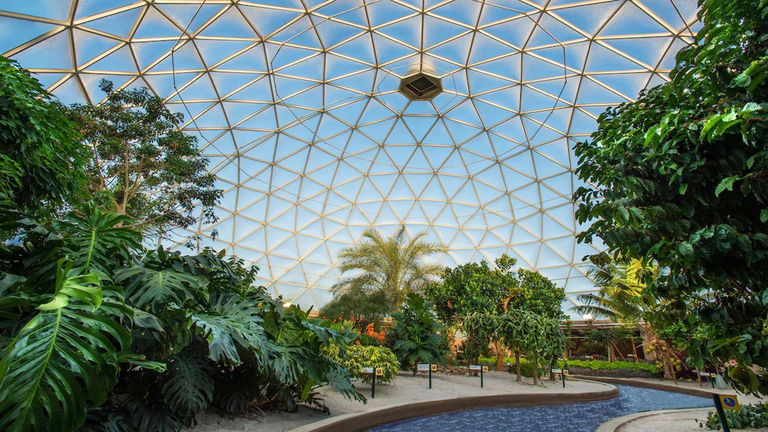Disney and Universal theme parks constantly update and evolve, but as the saying goes, "the more things change, the more they stay the same.”
So although these parks reimagine rides and update technology, storytelling remains at the heart of every experience.
“The draw of a theme park experience … is a mixture of returning to what’s familiar and experiencing something new — parents looking to share stories they recognize from their childhood with their children, and kids looking to get up close and personal with stories they know from their generation,” said Beci Mahnken of MEI-Travel, an agency based in Issaquah, Wash. “I can't think of a better way for a family to spend time sharing and making memories.”
That’s why Disney and Universal aim to offer a sweet spot between tradition and innovation — making theme park vacations both nostalgic and exciting, and drawing clients back year after year.
Disney Parks’ Pays Homage to the Past and Imagines the Future
“Disneyland will never be completed as long as there’s imagination left in the world,” Walt Disney once famously said.
And although he was addressing why his brand-new theme park wasn’t 100% ready for its highly anticipated opening day in 1955, the response set the standard to “walk the talk” for all Disney parks that followed, with imagination and imaginative storytelling as the foundation for every new attraction, according to the late Marty Sklar, a legendary Disney Imagineer.
The draw of a theme park experience … is a mixture of returning to what’s familiar and experiencing something new — parents looking to share stories they recognize from their childhood with their children, and kids looking to get up close and personal with stories they know from their generation.
Take, for example, the two-night immersive Star Wars: Galactic Starcruiser experience at Walt Disney World in Orlando, Fla. — it’s undoubtedly Disney’s most ambitious and technologically advanced experience to date, but the primary purpose of the state-of-the-art gadgetry is to serve the storytelling.
“No one has done anything like this before,” said Scott Trowbridge, portfolio creative executive and studio leader for Walt Disney Imagineering. “There’s a technology foundation that allows the story engine to operate [and] bring our stories to life … throughout the ship. So, what you see on the bridge, what you see in the cabin, what you see out the windows [and] what you see on the maps are all tied together and real.”
 Walt Disney World’s Galactic Starcruiser features interactive tech.
Walt Disney World’s Galactic Starcruiser features interactive tech.
Credit: 2022 Walt Disney World ResortMEI-Travel’s Mahnken describes Galactic Starcruiser as an amalgamation of a dinner mystery theater, high-production show, escape room, video role-playing game, cruise and resort stay.
“The technology comes in the form of missions, and text messages characters send to … move the story forward,” she said. “However, the real meat is what happens between those messages. That’s where the family connections really happen as you work to finish the missions.”
Similarly, Disneyland’s iconic Main Street Electrical Parade returned for its 50th anniversary in April: Older guests will remember the iconic “Baroque Hoedown” soundtrack — written and first recorded in 1967 — while kids will love the new 118-foot-long finale float that features more than a dozen classic and modern characters.
Sign Up for Our Monthly Family Getaways Newsletter
I accept the T&C and Privacy Policy.
“The parade has been updated over its history to incorporate contemporary and classic stories, so it strikes that perfect balance of nostalgia that takes us back to when we first saw the parade, and new stories that make it immediately loved by younger generations,” said Mirna Hughes, synergy manager for Disney Parks, Experiences and Products. “And who knows — when the parade celebrates 100 years, maybe they'll come back with their families to continue the love this parade started 50 years ago.”
Universal Parks Builds on Well-Known Storylines to Create New Offerings
Like Disney parks, Universal parks also strive to provide guests with an experience that’s both familiar and new.
After releasing the Jurassic World VelociCoaster at Universal Orlando’s Islands of Adventure in 2021 — and with the first U.S. Super Nintendo World set to open at California's Universal Studios Hollywood in 2023 — Universal Parks & Resorts has also resumed construction on Universal Orlando Resort’s Epic Universe. The 750-acre complex, slated to open in 2025, will include an entirely new theme park, hotels and an entertainment center.
 The Jurassic World VelociCoaster raptor at Universal Orlando Resort
The Jurassic World VelociCoaster raptor at Universal Orlando Resort
Credit: 2022 Universal Orlando Resort“Our vision for Epic Universe is historic,” said Tom Williams, Universal Parks & Resorts chairman and CEO, when the project was announced in 2019. "It will build on everything we have done and become the most immersive and innovative theme park we've ever created."
VelociCoaster and Super Nintendo World have something important in common: Both feature well-known franchises, but they tell those familiar stories in entirely new ways.
Shelby Honea, a senior show producer for Universal Creative, acknowledged that telling a cohesive “Jurassic World” story on a 70 mph roller coaster was an ambitious undertaking. Nevertheless, the VelociCoaster team not only embraced that challenge; they also introduced a new storytelling element that, according to creative director Gregory Hall, has never appeared in the movies — the velociraptor paddock.
The paddock plays a key role in the ride’s cinematic story: Featuring deep scratches in the concrete walls the design implies that some dinosaurs have attempted to escape (and, as it turns out, have succeeded).
“Storytelling is at the heart of Universal’s attractions, where guests can immerse themselves in the stories of today’s most iconic blockbusters,” said Eric Marshall, senior vice president of destination sales for Universal Press & Resorts. “It doesn’t surprise me that VelociCoaster is the highest-rated ride in a recent guest satisfaction survey.”
Parks like Universal and Disney entertain both adults and children, and offer an escape from everyday troubles, according to Mahnken.
“Now, here we are, at a time when we have so many distractions, and our lives are so busy that we struggle to have dinner at the same table each week,” she said. “It’s nice to know we have places like Disney and Universal to escape and connect.”
Disney and Universal: Working Toward a Sustainable Operation
In 1966, Walt Disney introduced America to the Experimental Prototype Community of Tomorrow (Epcot). It was a place, he said, that would create innovative solutions to meet the needs of the future.
Like Epcot, the newly launched Disney Planet Possible does the same. The forward-thinking program across all Disney parks addresses food insecurities and reduces food waste to “build and inspire a brighter, more sustainable future.”
 Disney Planet Possible harvests produce grown in Epcot’s The Land pavilion and aims to reduce food insecurities.
Disney Planet Possible harvests produce grown in Epcot’s The Land pavilion and aims to reduce food insecurities.
Credit: 2022 Disney ParksFor Disney World, that includes a full-circle food cycle, from menu planning that prevents food waste before it begins and harvesting fresh produce grown inside Epcot’s The Land pavilion, to recycling food waste into nutrient-rich soil for farming and landscaping.
“We’re committed to reducing food waste with a goal of zero waste to landfill,” said Michael Gonsalves, a chef for Walt Disney World Resort. “The vision and dedication to drive to sustainable zero-waste models should be the goal for everyone on this planet if we plan to see it thrive for generations to come.”
In Anaheim, Calif., meanwhile, food scraps at Disneyland are converted into an amendment that feeds farm animals. Additionally, all five Disneyland Railroad steam trains and the Mark Twain Riverboat run on biodiesel made from used cooking oil, eliminating about 200,000 gallons of petroleum diesel each year. These efforts and more earned Disneyland the Food Recovery Challenge Award from the U.S. Environmental Protection Agency, and the SEAL Business Sustainability Award in the environmental initiative category.
But Disney isn’t the only company working toward a more sustainable future. California’s Universal Studios Hollywood has rolled out four electric Studio Tour trams, the first and largest battery-powered off-road, high-torque and low-speed mass people-movers in the U.S. A fifth is slated to hit the tour route in early June, and Universal will convert the entire 21-tram fleet by 2025, reducing carbon emissions and providing a quieter guest experience.
“I’m extremely proud of this innovative undertaking and our commitment to creating a zero-emission Studio Tour fleet,” said Scott Strobl, executive vice president and general manager for Universal Studios Hollywood. “This is just one of many steps we’re taking [toward] Comcast NBCUniversal’s carbon-neutral goal.”